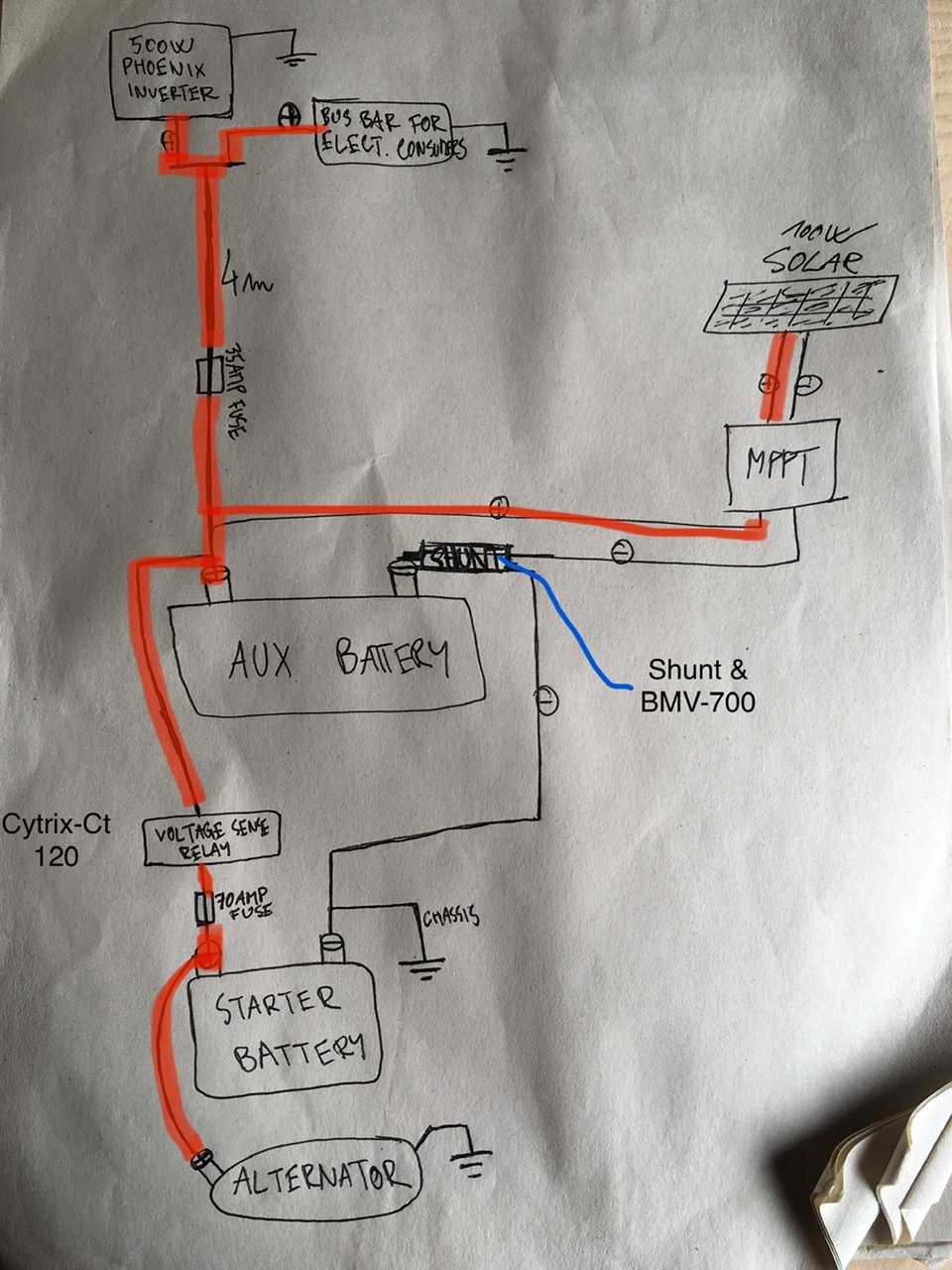Hello,
I would like to ask for second eyes on my van electricity setup, which I’ve been relying on for 2 months.
I’m planning to rewire my electrics according to the hand-drawn diagram (as to gain more space in the van). That involves moving the 2 batteries and their chargers to the engine bay (back of the van) while consumers (incl. phoenix inverter) will be in front of the car (4-5m away). Here are the data, I would be very grateful for any advice and help!
Alternator:
Capable of 70Ah output
Batteries:
- 75Ah lead acid starter battery
- 95Ah gel battery from Ective (max charge current 17A, float voltage 13.6-13.8V)
Cytrix-ct 120A:
- When home battery is at 60% (i.e. discharged by 40%), I get the following data. This is the max rate of discharge I am achieving after cloudy days with weak solar.
- 14.2V charge voltage
- 35A upon startup, going down to 20-25A after alternator warms up
- When battery is at 100% rate of charge, it still takes about 5A while driving. Battery monitor showed max battery voltage of 14.6V (result of alternator + MPPT)
100/20A MPPT charger:
100W flexible solar panel (achieved 64W max)
using gel battery charging preset (14.1V absorption, 13.8V float)
The consumers:
- 500W Phoenix Inverter (used mainly to power 60W laptop)
- DC consumers (LEDs, USB chargers, 50W fridge)
The current system raises the following concerns which I would like to address in the future system:
- Charging gel battery with too high current from the alternator (which goes down as the battery is topped up) - how big of a problem is this for the life span of the battery?
- Possible overcharging of gel battery when it’s at 100% (i.e. 14.2V at 3-5A even when battery is full)?
Finally, 2 questions regarding the future system:
- Use Orion-Tr battery to battery charger or is Cytrix-ct a good enough solution which won’t have a drastic effect on the lifespan of the battery?
- Should Phoenix Inverter have its own dedicated cable runs (positive+negative connected directly to battery) or is it OK to connect it to a positive bus and negative to car chassis? Most diagrams have dedicated cables for phoenix inverters hence my question.
Many thanks in advance, Jakub

